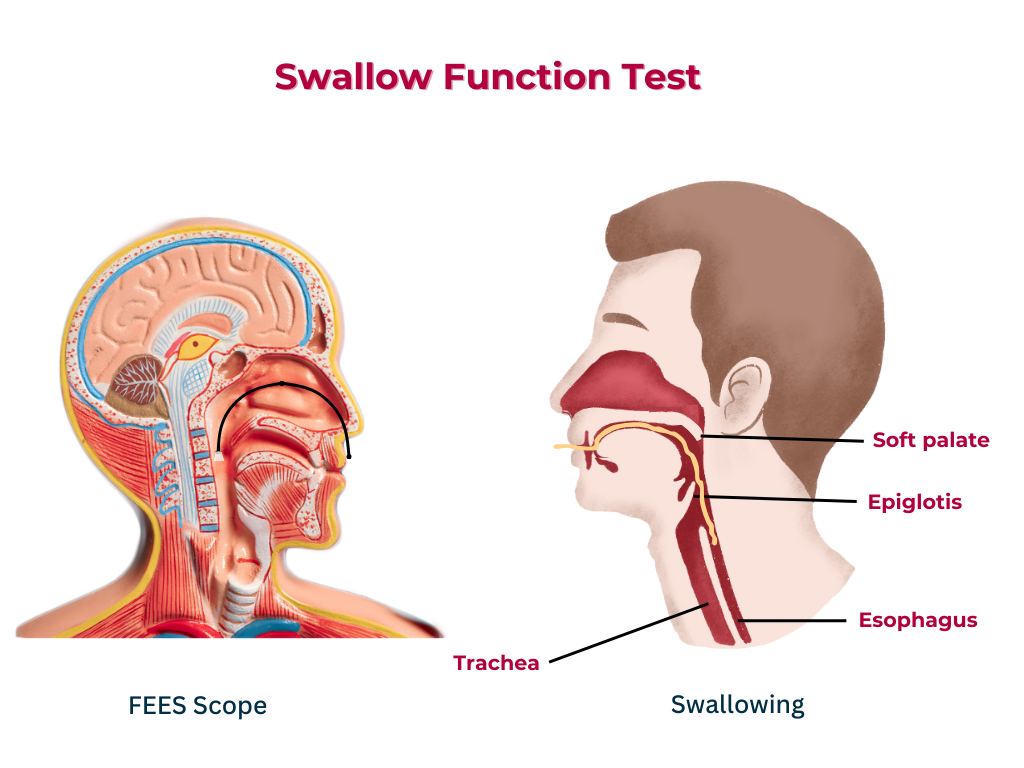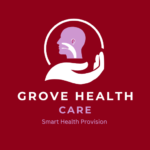Swallow Function Test

Protocol For Evaluating Swallow Function
Clinical Evaluation
1. Medical History: Review of medical history, including neurological, respiratory, and gastrointestinal conditions.
2. Symptom Assessment: Assessment of symptoms, such as dysphagia, coughing, choking, and regurgitation.
3. Oral and Pharyngeal Examination: Examination of the oral and pharyngeal structures, including the lips, tongue, palate, and pharynx.
Bedside Swallowing Assessment
1. Water Swallow Test: Patient swallows 3-5 mL of water to assess swallowing function.
2. Food Trial: Patient eats a small amount of food to assess swallowing function.
3. Coughing and Choking: Assessment of coughing and choking during swallowing.
Instrumental Assessments
1. Videofluoroscopic Swallow Study (VFSS): X-ray examination of swallowing function using barium.
2. Fiberoptic Endoscopic Evaluation of Swallowing (FEES) : Endoscopic examination of swallowing function.
3. Electromyography (EMG): Assessment of muscle activity during swallowing.
Assessment of Swallowing Function
1. Oral Phase: Assessment of oral preparation, formation of the bolus, and oral transit.
2. Pharyngeal Phase: Assessment of pharyngeal transit, laryngeal elevation, and epiglottic closure.
3. Esophageal Phase: Assessment of esophageal transit and lower esophageal sphincter function.
Dysphagia Diagnosis and Treatment
1. Dysphagia Diagnosis: Diagnosis of dysphagia based on clinical and instrumental assessments.
2. Treatment Planning: Development of a treatment plan, including dietary modifications, swallowing exercises, and compensatory strategies.
3. Rehabilitation : Implementation of the treatment plan and ongoing assessment and modification as needed.
Documentation and Communication
1. Documentation: Accurate documentation of assessment findings, diagnosis, and treatment plan.
2. Communication: Communication of assessment findings and treatment plan to the patient, family, and healthcare team.
Note: This protocol should be individualized and guided by a multidisciplinary team of healthcare professionals, including speech-language pathologists, occupational therapists, and physicians.
Share Post On:
Recent Posts
-
Carcinoma of the Oropharynx
-
Peritonsillar Abscess
-
Ethics of Doctor-Patient Relationship
-
Doctor-Patient Relationship Case Scenarios
-
Asymmetrical Tonsils and Approach to Evaluation and Management
-
Nasal Polyposis
-
Rigid Oesophagoscopy and Complication
-
Anatomy of Oesophagus
-
Stridor, Snoring, Stertor And Wheezing: How They Compare
-
Temporomandibular Joint (TMJ)
-
Otoacoustic Emissions
-
Tympanometry
-
Functional Endoscopic Sinus Surgery (FESS)
-
Tracheostomy
-
Clinical Voice Test (CVT) for Hearing Loss
-
Acute Epiglottitis And Approach To Management
-
Synoptic Overview Of Nasopharyngeal Carcinoma
-
Prioritizing Support For People With Disabilities Over Unhealthy Competitions That Marginalise The Downtrodden
-
Otitic Barotrauma
-
Titbits of Informed Consent Process for a Medical or Surgical Procedure
-
Comprehensive Overview of Mpox (Monkeypox)
-
Overview Of Corrosive Ingestion - Acid & Alkalis, and Management Approach
-
Ethical Conundrum
-
Comprehensive Overview of Laryngeal Papillomatosis and HPV Virus
-
All You Need To *Know About Gardasil*
-
Preauricular Sinus
-
Laryngomalacia - comprehensive overview
-
Flexible Laryngoscopy features of Laryngomalacia
-
Case Report of a Rare Cause of Upper Airway Obstruction In Adults
-
Usefulness of The Neck Soft Tissues X-Ray
Categories
Get in Touch
Read doctor-produced health and medical information written for you to make informed decisions about your health concerns.

